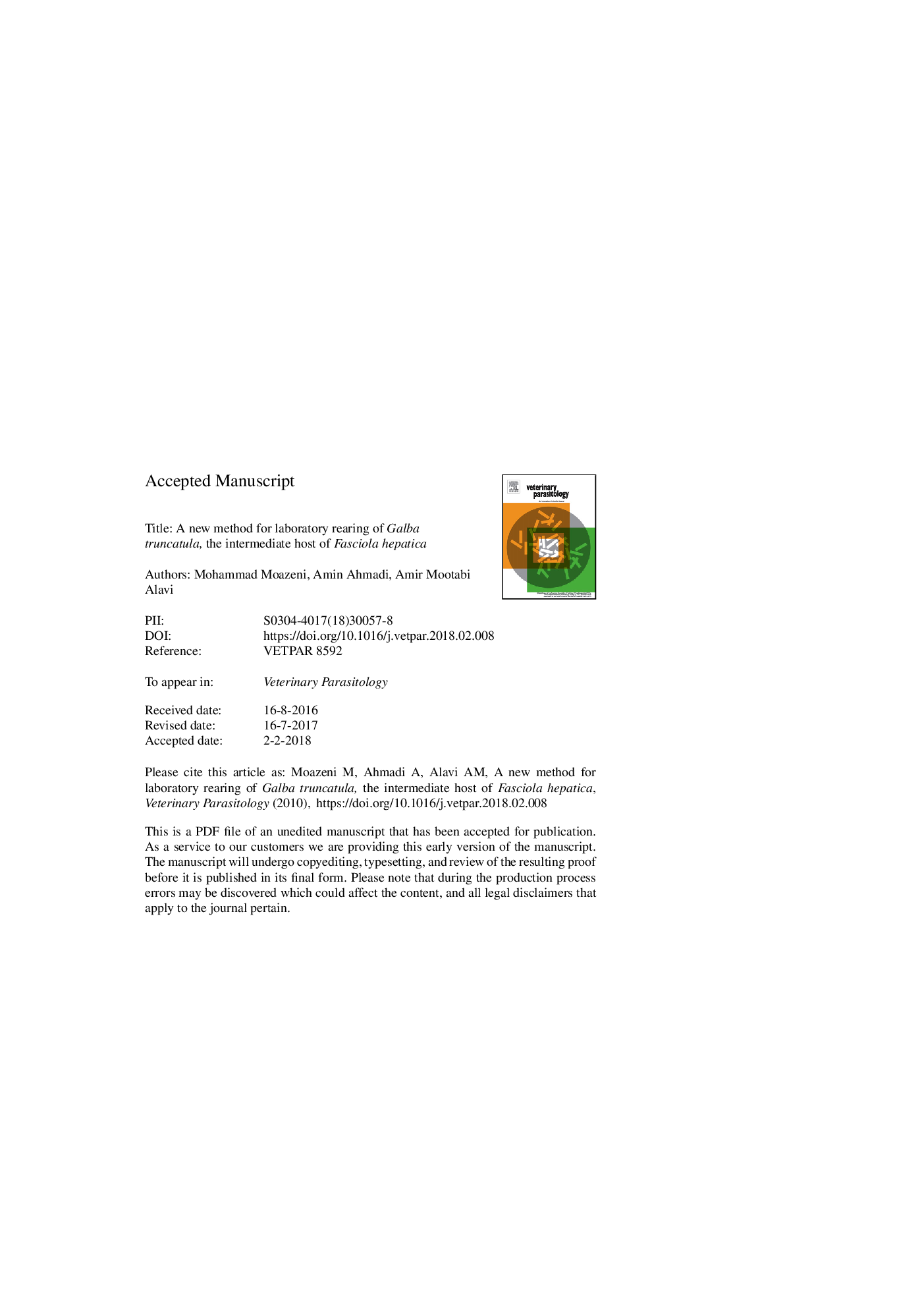| Article ID | Journal | Published Year | Pages | File Type |
|---|---|---|---|---|
| 8506070 | Veterinary Parasitology | 2018 | 16 Pages |
Abstract
In this study a relatively large and open top aquarium was designed, constructed and introduced as a suitable habitat for nutrition, growth and development as well as for egg laying and breeding of Galba truncatula under laboratory conditions. The soil and water used in the aquarium were collected from the locality in which the snails were collected. The aquarium was placed in a laboratory with temperature of 18-32â¯ÂºC and relative humidity of 22-37% respectively, according to the season. The artificial light was controlled by a light timer, giving 12â¯h of light and 12â¯h of darkness. The snails were fed with dried lettuce leaves, Cyperus alternifolius (aquatic plant), Spirulina (algae), Orthotrichum rupestre (moss) and cuttlebone (a supplementary source of calcium). Approximately five weeks after the start of study, there was evidence of reproduction and success in rearing of G. truncatula by the appearance of eggs and small snails (0.1-0.5â¯mm) in the aquarium. In conclusion, large scale laboratory rearing of G. truncatula is a feasible task. The method may be improved by balancing the temperature and relative humidity as well as by optimizing the soil type, the water quality and the type of food.
Related Topics
Life Sciences
Agricultural and Biological Sciences
Animal Science and Zoology
Authors
Mohammad Moazeni, Amin Ahmadi, Amir Mootabi Alavi,
